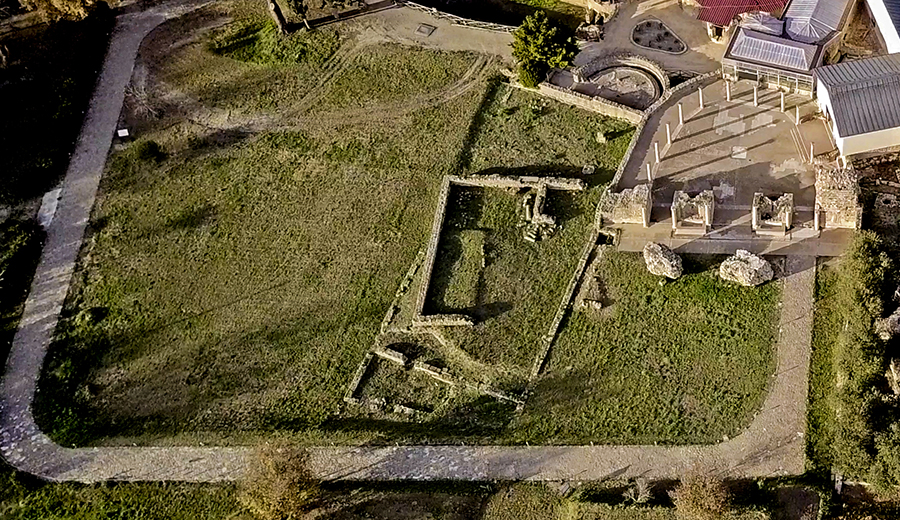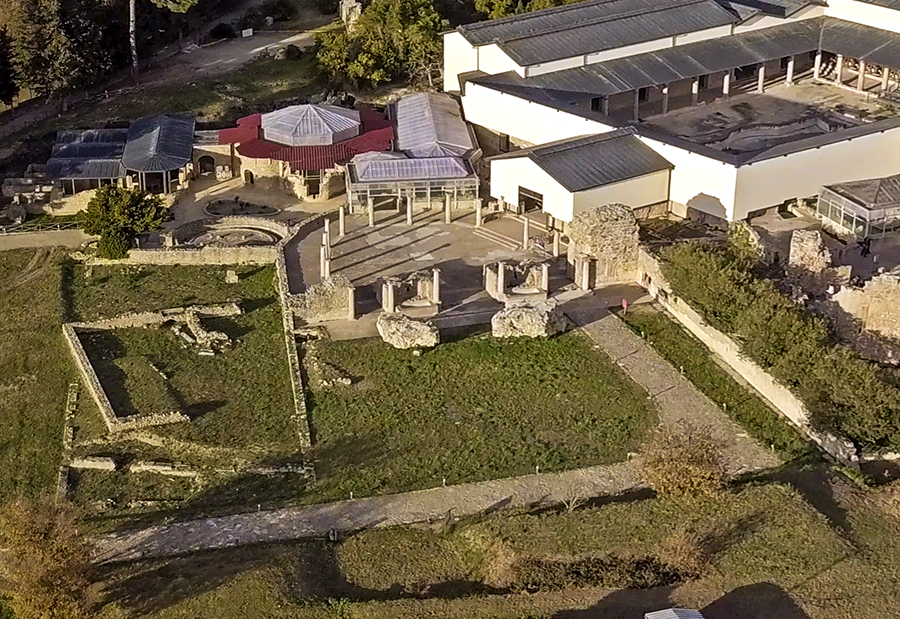Archaeological investigations identified the
pars fructuaria
 , or
pars rustica
, or
pars rustica
 according to some scholars, south of the late antiquity residence, recognisable by remaining structures of warehouses used to store farming products. This discovery underlines the important role held by the villa as a centre of economic and productive activity.
according to some scholars, south of the late antiquity residence, recognisable by remaining structures of warehouses used to store farming products. This discovery underlines the important role held by the villa as a centre of economic and productive activity.
In fact, the late antiquity residence harmoniously combined otium, negotium and oficium within public and private routes that still unfold in its spaces, as if it were a miniature city that probably belonged to a high-ranking member of the Roman senatorial aristocracy.
According to some scholars, its four constituent nuclei, rather different in terms of size and iconographic styles, might lead us to think of an extension built to a direct imperial commission. Its rooms, pervaded by mythological, realistic and generic scenes, offer visitors the magnitude of a civilisation rich in culture and dedicated to celebrating the empire.
, or
pars rustica
according to some scholars, south of the late antiquity residence, recognisable by remaining structures of warehouses used to store farming products. This discovery underlines the important role held by the villa as a centre of economic and productive activity.

